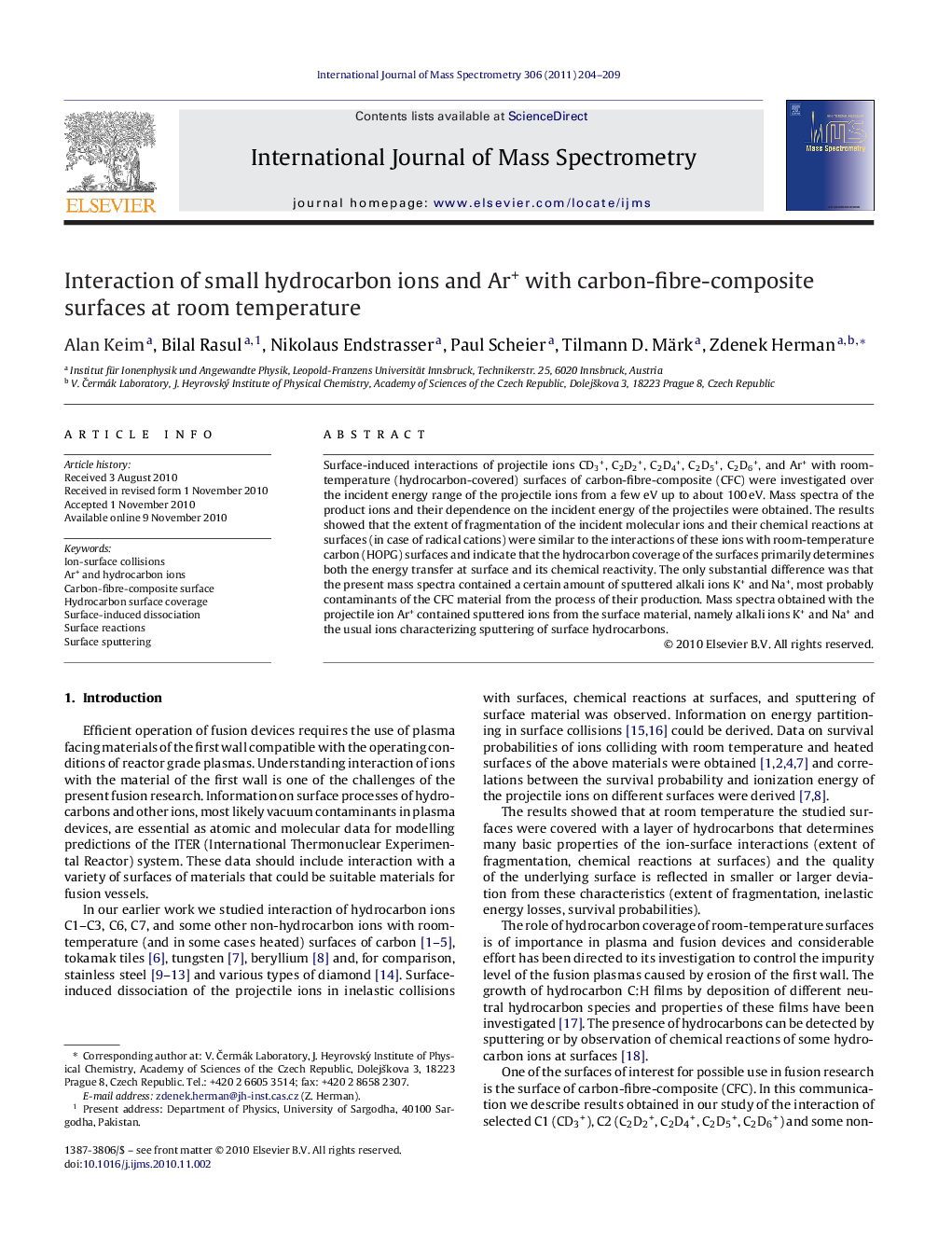| Article ID | Journal | Published Year | Pages | File Type |
|---|---|---|---|---|
| 1192930 | International Journal of Mass Spectrometry | 2011 | 6 Pages |
Surface-induced interactions of projectile ions CD3+, C2D2+, C2D4+, C2D5+, C2D6+, and Ar+ with room-temperature (hydrocarbon-covered) surfaces of carbon-fibre-composite (CFC) were investigated over the incident energy range of the projectile ions from a few eV up to about 100 eV. Mass spectra of the product ions and their dependence on the incident energy of the projectiles were obtained. The results showed that the extent of fragmentation of the incident molecular ions and their chemical reactions at surfaces (in case of radical cations) were similar to the interactions of these ions with room-temperature carbon (HOPG) surfaces and indicate that the hydrocarbon coverage of the surfaces primarily determines both the energy transfer at surface and its chemical reactivity. The only substantial difference was that the present mass spectra contained a certain amount of sputtered alkali ions K+ and Na+, most probably contaminants of the CFC material from the process of their production. Mass spectra obtained with the projectile ion Ar+ contained sputtered ions from the surface material, namely alkali ions K+ and Na+ and the usual ions characterizing sputtering of surface hydrocarbons.
Graphical abstractFigure optionsDownload full-size imageDownload high-quality image (135 K)Download as PowerPoint slideResearch highlights▶ Fragmentation on room-temperature CFC surface similar to those on carbon surfaces. ▶ Surface reactions similar to those on carbon surfaces. ▶ Increased amounts of K+ and Na+ observed (presumably from surface preparation). ▶ Ar+ exhibits mostly sputtering of surface material (hydrocarbon ions, K+, Na+).
